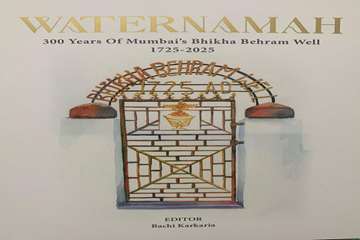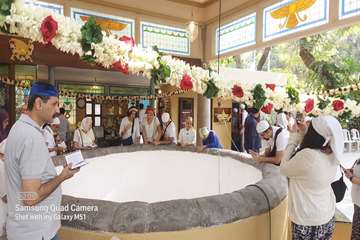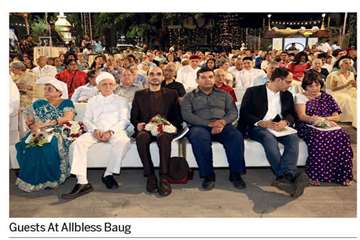Jamshidi Nowruz Celebration and the 300th Anniversary of the Behkha Bahram Well in Mumbai
The Parsi community in Mumbai (Zoroastrians residing in India) celebrated Jamshidi Nowruz (the Iranian New Year) on Friday, Farvardin 1, 1404, coinciding with the 300th anniversary of the digging of the Behkha Bahram well. The event also featured the unveiling of the book "Water Namah," authored by former journalist Bachti Karkaria.

The Jamshidi Nowruz Celebration and the 300th Anniversary of the Behkha Bahram Well in Mumbai
The Parsi community in Mumbai (Zoroastrians residing in India) celebrated Jamshidi Nowruz (the Iranian New Year) on Friday, Farvardin 1, 1404, coinciding with the 300th anniversary of the digging of the Behkha Bahram well. The event also featured the unveiling of the book "Water Namah," authored by former journalist Bachti Karkaria.
This ceremony was attended by distinguished guests, including retired High Court Judge Kadi Kadawala, Dr. Firouzeh Godrej from the renowned Parsi family in India and an art historian with a PhD in ancient Indian culture, Mohammad Reza Fazel, the head of the Iranian Cultural House in Mumbai, and the trustees of the Behkha Bahram well. The event was warmly received by the Parsi and Zoroastrian community at the Albless Bagh in Mumbai.
Zoroastrians residing in India, known as "Parsis," celebrate not only Jamshidi Nowruz, which marks the beginning of spring, but also an ancient version of Nowruz based on the calendar commonly used among Parsis, referred to as "Ancient Nowruz." This day is recognized as an official holiday in India.
The notable difference between these two Nowruz celebrations is the timing of their observance, which has led Parsis in India to celebrate Nowruz in the middle of summer. This year, the Parsi New Year, or Nowruz of the year 1393, falls on Thursday, Tir 26, 1404, corresponding to July 17, 2025.
Parsis in India celebrate Nowruz like all Iranians, engaging in spring cleaning, setting up Nowruz tables, wearing new clothes, visiting friends and family, and preparing special foods and drinks for the occasion. They gather at fire temples to pay their respects to their prophet, Zoroaster. One of the central themes of the Parsi New Year celebrations is visiting the fire temple, which signifies the importance of adhering to the traditions of their ancestors.
The Behkha Bahram well, located in the heart of Mumbai, stands out with its distinctive walls, colorful stained glass windows, and lush green grass. For the past 300 years, the sweet water of Behkha Bahram has quenched the thirst of the people while also being intertwined with the faith of the Parsi community. The well is named after Behkha Ji Bahram Ji Panday, a Parsi merchant from Bharuch, who dug the well in 1725 after having a dream about it. Although its proximity to the sea initially raised questions about the feasibility of drilling a freshwater well, once it was excavated, drinking water flowed from the ground. Since then, this site has become a place of worship for Parsis.
The book "Water Namah: 300 Years of the Behkha Bahram Well in Mumbai" is a collection of 32 articles by Zoroastrian scholars, edited by Bachti Karkaria. This book traces the evolution of this revered site over the past three centuries and highlights the mythological significance of Ardavisura Anahita, the guardian spirit of water.





Write your comment.